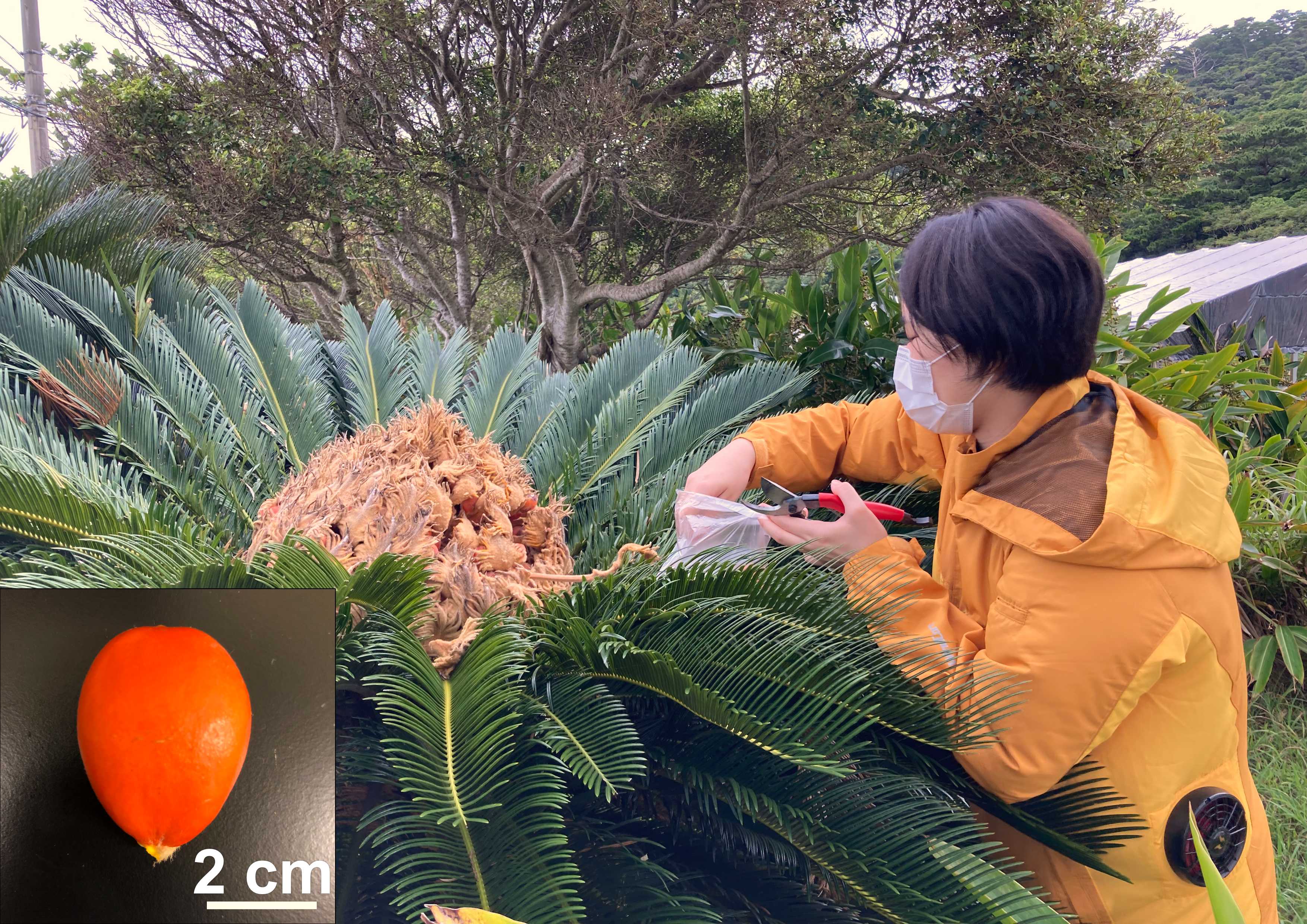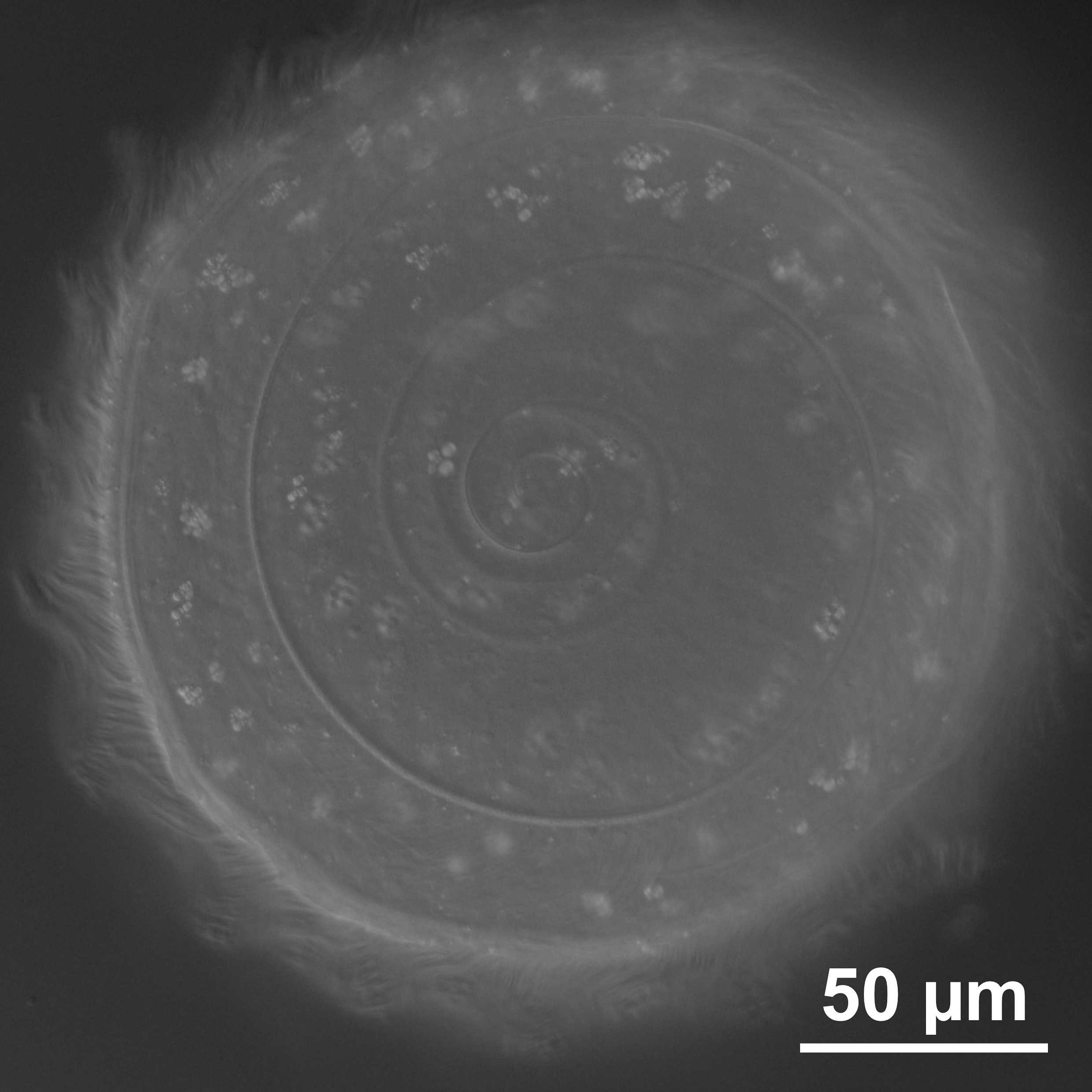Disclaimer: machine translated by DeepL which may contain errors.
~ Message from a graduate student~.
Fertilization Mechanism Evolutionary Footsteps in Living Fossil Cycads
 |
| Yukiho Toyama |
| Department of Biological Sciences 1st Year Doctoral Student |
| Birthplace Kagoshima Prefecture |
| High School Kagoshima Prefectural Tsurumaru High School |
| Faculty The University of Tokyo Faculty of Science |
When we think of the mechanism of fertilization in living organisms, the image that comes to mind is probably that of sperm swimming to the egg. While this mechanism has been preserved in animals in many cases, it has undergone major changes in terrestrial plants over the course of evolution. One of the most significant changes is the loss of sperm motility. Mosses and ferns, which emerged early in the evolution of plants on land, have motile sperm. On the other hand, most seed plants have sperm cells that have lost their flagella and are transported to the egg by pollen tubes that extend from the pollen. The present research started with the question of how such a major change in the fertilization mechanism occurred and the process of transition.
I focused on cycads and ginkgo trees as key organisms to answer this question. These plants are the oldest of the seed plants and are called living fossils, and are unique in that they retain motile sperm like mosses and ferns.
We hypothesized that the unique fertilization mechanism using swimming sperm in seed plants may have left important traces at a turning point in the evolution of plant fertilization mechanisms.
Although the fact that cycads and ginkgo have sperm was discovered by Japanese researchers 130 years ago and attracted much attention, until now, the details of the fertilization process and the factors important for fertilization have been very limited. However, today's various technological innovations in microscopy and genome information analysis have provided a tailwind to overcome this situation, and the time is right to analyze this fertilization mechanism once again.
The cycad, the subject of my research, cannot be grown in the laboratory, and its fertilization period is limited to two or three days a year. Field surveys revealed that cycads inhabit a wide range of habitats in Japan, from the Nansei Islands to the Kanto region, and that the fertilization period varies slightly according to latitude. Therefore, we were able to continuously sample hypocotyls from female flowers at the time of fertilization for about three months by gradually moving northward while shifting the timing of fertilization (left figure). Furthermore, we were able to isolate the tissues involved in fertilization by microscopic manipulation (right figure), and were able to capture the phenomenon that cycad sperm were attracted by the female tissues and swam in the same manner as mosses and ferns. We also succeeded in identifying a group of genes that may contribute to fertilization by analyzing the components extracted from these tissues. Based on these results, they aim to further investigate the details of cycad fertilization.


(Bottom) Isolated cycad sperm. (Bottom) Isolated cycad spermatozoa, which are spherical in shape with a diameter of 200 μm and thousands of flagella formed on the surface.
I have not always been very interested in plants. The cycad I am currently working with was just one of those plants that blended into the landscape. However, when I encountered the scientific question of knowing the evolution of the fertilization mechanism, the cycad came into view with a strong sense of presence. This sensation of a vividly colored world through the activity of science, which is the search for truth, has always held a special place in my heart.
Published in the September 2023 issue of lty of The Rigaku-bu News


